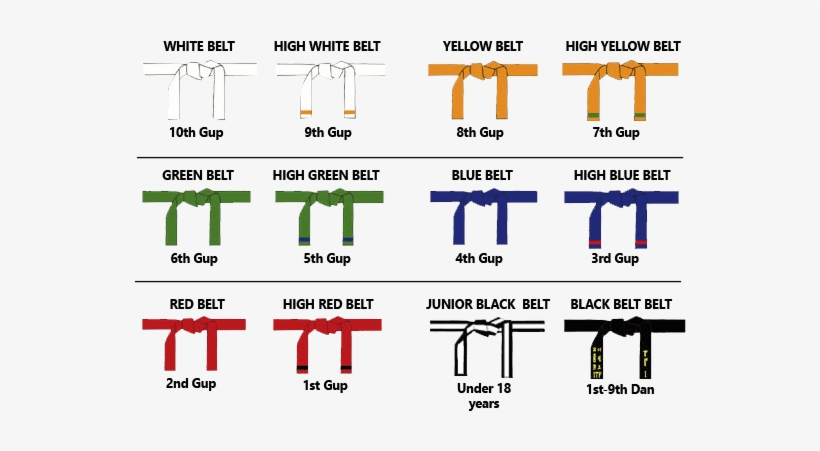The world of martial arts offers many styles and disciplines, making it difficult to decide which is right for you. Two popular and widely practiced forms are Taekwondo and Karate, originating in Korea and Japan. Are you too confused about Taekwondo Vs Karate?
Both have similarities rooted in their rich histories and shared values like discipline, self-defense, and personal growth. There are also striking differences in techniques, philosophies, competition rules, and uniform style. The usage of weapons, the average time to master them, etc., also sets them apart.
Key Takeaways
- Taekwondo and Karate are two popular martial arts with distinct differences in techniques, philosophies, and competition rules.
- Taekwondo emphasizes high-flying kicks and spinning maneuvers. Karate focuses more on hand strikes like punches and chops.
- Both martial arts offer physical benefits like improved strength, agility, balance, and endurance. Mental benefits include increased focus, discipline, self-confidence, and practical techniques for self-defense.
- The choice between Taekwondo Vs Karate depends on personal goals, interests, and physical abilities/limitations.
Both styles can be learned at any age by anyone seeking to train their mind/body/spirit. Rigorous dedication is needed to master these ancient art forms. They encompass everything from basic movements to advanced concepts.
They emphasize a deeper understanding of principles underlying teachings associated with each martial art tradition. It reflects a unique cultural heritage rich history continually evolving modern times.
Understanding Taekwondo Vs Karate
Taekwondo and Karate are two widely practiced martial arts with origins in Korea and Japan, respectively.
Origins And History
Taekwondo and Karate have deep roots, tracing their origins to ancient Japan and Korea. While both martial arts boast rich histories, they differ in cultural influences, development, and foundational philosophies.
Born on the island of Okinawa, Japan, Karate can be traced back centuries. It evolved from a blend of indigenous fighting styles like Te and Chinese Kenpo martial arts techniques.
Taekwondo emerged in post-WWII Korea. It is an amalgamation of various Korean martial art forms like Subak, Taekkyeon, and even elements from Karate. This resulted from the Japanese colonization during the early 20th century.
It was officially established in 1955 by General Choi Hong Hi after years of systematic synthesis between these native styles. Modern-day Taekwondo is characterized by high-flying kicks accompanied by grace and fluidity.
Techniques and Philosophy
Taekwondo and Karate boast unique techniques and philosophies that set them apart from other martial arts styles. In Taekwondo, the emphasis is on high, fast kicks, striking with the foot or knee. It also includes powerful jumping and spinning maneuvers.
Meanwhile, Karate focuses more on hand strikes like punches, knife-hand chops, and elbow strikes. They are executed with precision and power.
The philosophies behind these two martial arts styles also differ significantly. Taekwondo is rooted in Korean history dating back over 2,000 years. It was developed as a method of self-defense against invaders. Taekwondo subscribes to five tenets: courtesy (Ye Ui), perseverance (In Nae), integrity (Yom Chi), indomitable spirit (Baekjul Boolgool), and self-control (Guk Gi).
Karate’s underlying philosophy draws inspiration from Zen Buddhism. Principles like humility, and respect for others’ life force energy known as “ki,” also play a crucial role.
Discipline and Respect
Discipline and respect are fundamental principles at the core of both Taekwondo and Karate. These martial arts traditions instill a strong sense of self-discipline in practitioners. This emphasizes strict adherence to rules, etiquette, and personal conduct.
An essential element in both Taekwondo and Karate is respecting one’s instructors, fellow students, and opponents. This mutual respect translates into adopting a humble attitude that discourages arrogance or boasting about achievements.
Demonstrations of such appreciation include bowing before entering the dojo (training hall). Addressing an instructor with proper honorifics (e.g., “sensei” in Karate) is another.
Comparison of Taekwondo and Karate
Taekwondo and Karate have some similarities in techniques. But they differ greatly in terms of competition rules and opportunities, physical and mental benefits, and self-defense skills.
Competition Rules and Opportunities
Competition rules and opportunities vary between Taekwondo and Karate. This provides martial arts enthusiasts with distinct choices when deciding which discipline to pursue.
| Aspect | Taekwondo | Karate |
| Competition Rules | Taekwondo competitions primarily focus on sparring. Athletes gain points by landing accurate, controlled kicks and punches on their opponent’s scoring zones, like the torso and head. The World Taekwondo Federation (WTF) and International Taekwondo Federation (ITF) set competition rules and guidelines. | Karate competitions consist of two main categories: kata and kumite. Kata involves the demonstration of prearranged forms. Kumite is a sparring match where points are awarded for successfully executed strikes, kicks, and punches. The World Karate Federation (WKF) oversees the rules and guidelines for Karate competitions. |
| Opportunities | Taekwondo has a wide range of competition opportunities. It includes local tournaments to international championships. It has culminated in the Olympic Games as an official sport since 2000. Both WTF and ITF have global and regional championships hosting high-level competitions. | Karate offers many opportunities for competition, from regional to global championships, led by organizations like the WKF. Karate’s inclusion in the 2020 Tokyo Olympic Games has further expanded the sport’s competitive opportunities and raised its global profile. |
| Age Groups | Competitions in Taekwondo are available for various age groups, from children to seniors. They are divided into weight classes to ensure fair matchups. | Like Taekwondo, Karate competitions cater to multiple age groups and skill levels. Separate categories for children, adults, and seniors and weight classes in Kumite events exist. |
There is a different emphasis on techniques and styles in both forms. Taekwondo and Karate offer unique experiences for martial arts fans looking to engage in competitive events.
Physical and Mental Benefits
Both Taekwondo and Karate provide numerous physical and mental benefits to their practitioners. Practicing these martial arts regularly builds strength, flexibility, agility, balance, and endurance.
These martial arts also promote positive mental health. They require discipline and focus that help develop concentration skills while reducing stress.
Additionally, practicing either Taekwondo Vs Karate provides an opportunity for personal growth.
Self-Defense Skills
Both Taekwondo and Karate are popular martial arts forms that teach practical techniques for self-defense. Students learn to defend themselves against an untrained attacker using a combination of strikes, kicks, and throws.
Karate emphasizes physical conditioning and toughness and learning how to use hand strikes effectively. Taekwondo focuses more on flexibility and agility. Extensive training in kicking techniques like head strikes, knee strikes, and spinning hook kicks is given.
Whether it’s Karate or Taekwondo, both can be used regardless of their size or strength.
Differences in Taekwondo vs Karate
Taekwondo focuses more on kicking techniques, while Karate focuses more on striking with the hands and feet. The uniforms used in Taekwondo (dobok) and Karate (gi) are also different. Their use of weapons in training and competition is also distinct.
Focus On Kicking Vs Striking
One of the primary differences between Taekwondo Vs Karate is their respective emphasis on kicking versus striking. Taekwondo players focuses heavily on kicks with spinning hook kicks, jumping front kicks, and ax kicks.
There is some overlap in technique between the two martial arts forms. For example, both include roundhouse kicks.
The difference in focus means that students of each will develop unique strengths and weaknesses. For example, a practitioner of Taekwondo may be better at defending against high attacks. This is due to their extensive training in head-level kicking techniques.
Uniforms (Gi Vs Dobok)
Uniforms are an important aspect of martial arts, and both Taekwondo and Karate have their unique styles. In Karate, practitioners wear a traditional white uniform called a gi, made of cotton or polyester.
The gi is lightweight and breathable, allowing for ease of movement during training.
The dobok used in Taekwondo has evolved but remains largely unchanged since its introduction. It typically comes in white but may sometimes include black collars to denote higher ranks.
Both uniforms serve specific purposes. The gi’s design allows for graceful movements and quick reflexes. The dobok emphasizes fluidity in kicking techniques while maintaining coverage.
Use of Weapons
Both Karate and Taekwondo have weapons training, but they differ in their usage. In traditional Karate, weapons like the bo staff, nunchaku, tonfa, and others are taught as an extension of empty-hand techniques.
Weapons training in Karate typically involves learning various katas or predefined sequences of movements. It aims to improve coordination and timing. Offensive and defensive techniques are taught to use against attackers carrying a weapon.
Belt and Ranking Systems
Both Taekwondo and Karate utilize a belt ranking system to signify a student’s level of accomplishment. In Taekwondo, the ranks begin with white belts for beginners. It progresses through various color belts before reaching the coveted black belt level.
Karate follows a similar progression from white to black belts. The ranking system is designed to motivate students as they advance in their training.
It provides them with achievable milestones that demonstrate improvement over time. Through each rank, they gain additional knowledge and skills while building discipline, focus, and self-confidence.


Choosing Between Taekwondo and Karate
Choosing between Taekwondo Vs Karate ultimately depends on personal goals, interests, physical abilities, and availability of training facilities.
Personal Goals And Interests
When choosing between Taekwondo and Karate, consider your personal goals and interests.
Taekwondo is the way to go if you are interested in a more competitive sport. It offers opportunities for sparring and tournaments. If you want to focus more on traditional martial arts principles and self-defense techniques, Karate might be better.
Availability Of Training Facilities And Instructors
Finding a training facility and instructor that suits your needs is essential in martial arts. Choosing a reputable school with experienced instructors will provide you with the tools necessary to succeed.
When looking for a training facility, consider location, class schedules, and cost factors.
Find an instructor who aligns with your goals and learning style. A good instructor should be knowledgeable in their discipline, patient, and able to provide constructive feedback.
They should prioritize safety during training sessions while motivating students to improve their skills over time.
Physical Abilities And Limitations
Consider your own physical abilities and limitations when choosing between Taekwondo and Karate. While both martial arts offer a range of techniques, they also require specific physical skills.
For example, Taekwondo involves a lot of jumping and high kicks. It can be challenging for those with limited mobility or injuries.
Remember that mastering martial arts takes time, practice, and dedication. Therefore, choosing an art form that matches your goals and abilities is essential.
FAQs
Can I Learn Both Martial Arts?
Yes, it is possible to learn both Karate and Taekwondo. It requires significant time, effort, and dedication. Learning them together may be challenging since both martial arts have distinct techniques and philosophies.
Learning both martial arts can provide a more well-rounded skillset regarding striking techniques and self-defense skills. Some professional MMA fighters incorporate kicks from Taekwondo into their fighting styles while using Karate for hand strikes.
How Long Does It Take To Master Taekwondo Or Karate?
Mastering Taekwondo or Karate is a lifelong journey and requires consistency, determination, and dedication. It is not accomplished quickly or easily.
Earning a black belt in either martial arts form takes around three to five years of dedicated training.
Is It Too Late To Start Learning At An Older Age?
Many people wonder if it is too late to start learning karate or taekwondo at an older age. The truth is that it’s never too late to start training in martial arts.
Both disciplines offer various physical and mental benefits, including increased strength, flexibility, coordination, and focus. They teach essential self-defense skills that can be useful for anyone facing an untrained attacker.
Consult a doctor before starting any new physical activity. Choose the right martial art form for your specific goals and limitations.
What Are The Primary Differences Between Taekwondo And Karate?
Taekwondo emphasizes kicking techniques and is more acrobatic, focusing on quick movements and agility. Karate emphasizes both punching and kicking techniques while also incorporating grappling moves into its practice.
Conclusion
Taekwondo and Karate are popular martial arts originating in different parts of Asia. While they share some similarities in discipline and self-defense techniques, they also have distinct differences. Their philosophy, techniques, and competition rules are unique.
The choice between these two martial arts depends on personal goals, interests, physical abilities, and limitations. Whether you learn Taekwondo or Karate, both offer physical benefits like improved fitness and mental benefits like self-confidence.









